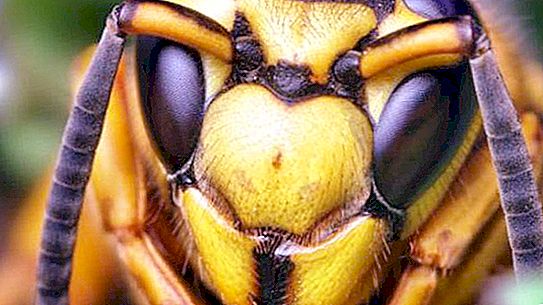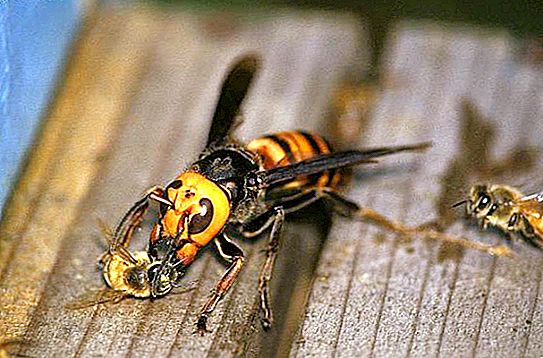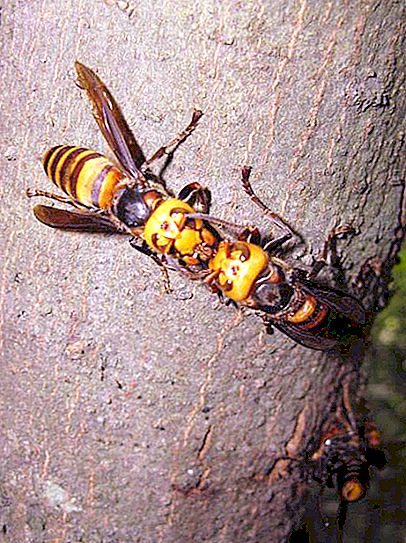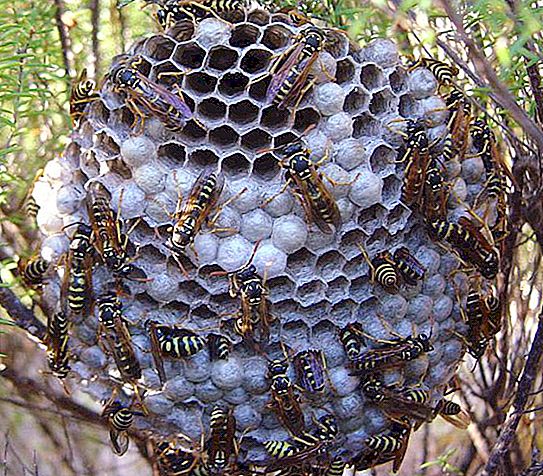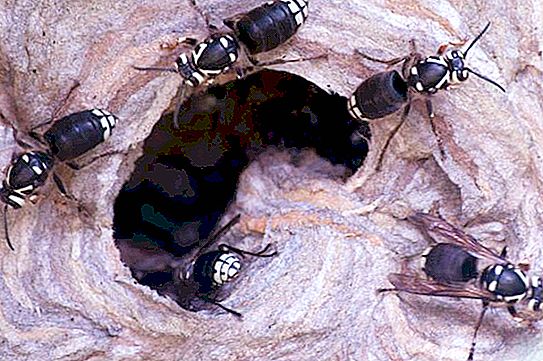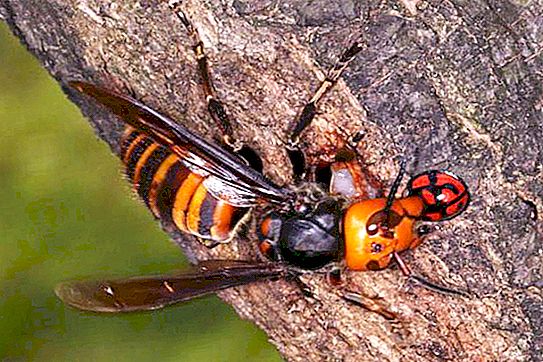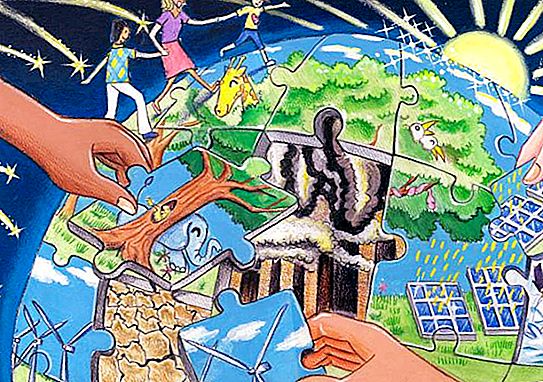A great many animals surround man. The hornets are well known to us, but people do not like them. This insect causes fear, and sometimes panic and horror. It is able to attack a person and painfully sting him. Hornet venom can cause a severe allergic reaction, and multiple bites can be fatal. If anaphylactic shock occurs, immediate medical attention is needed. At the same time, the hornet is useful. These individuals are wonderful architects and builders! The whole question is how we relate to them.
Hornets - public insects
People call them pirates. Other names - "winged corsairs", "flying tigers". Here's what the biological classification of hornets looks like:
- insect class (Insecta);
- Hymenoptera squad (Hymenoptera);
- a family of folded-winged paper wasps (Vespidae).
The world has twenty-three types of hornets and many of their subspecies. In some European countries they are under state protection. So, for example, in Germany, a fine of 50 thousand euros is provided for the destruction of nests of such insects. An ordinary hornet lives in numerous colonies or families, which include: a female, males and working individuals. By the end of August - early September, the number of colonies can reach 400-800 units.
There may be several females in a family, but there is only one hornet uterus. At the same time, to prevent mating and deposition of fertilized eggs by other females, the main uterus emits a special smell (Pheromone), and the unfertilized ones lay the secondary uterus, from which only drones hatch. Hornets settle in earthen nests, choose a hollow tree for their dwelling, places under round roofs, on fences. They make nests using saliva, chewing wood. The first spring generations consisted of working hornets. Autumn is females and males. For the winter only fertile individuals remain. They hibernate.
An ordinary hornet destroys prey with a sting. Another way is to tear the victim apart with his jaws. Various insects, including nocturnal ones, become food for predators. The hornet kills a bee that is caught immediately and sucks. The victim’s breast is carried into the nest for feeding its brood.
For a day a large family of winged predators catches up to 500 or more grams of insects. In the garden, hornets are very useful!
They feed on the juice of ripe fruits, trees and nectar of readily available flowers.
Protein food is necessary for the uterus for exhausting labor - egg laying. Hornets almost do not sleep, they just freeze for half a minute about 20–25 times a night and do not move.
Dimensions and Description
The front half of the breast of the uterus is yellow. The head has the same color. The first two rings are dark brown with yellow stripes, the rest are yellow with brown spots. From 25 to 35 millimeters, the uterus of the hornet has a length. The sizes of males and working individuals are smaller.
The uterus and working individuals have a sting - this is a modified ovipositor. In the upper part of the head, on the sides there are three simple large faceted eyes. They have a reddish-orange hornet, and the cut resembles the letter C. The gnawing mouth apparatus is equipped with very strong mandibles. The body is covered with hairs. For the development of ovaries and egg production, the hornet uterus needs protein-rich foods. For successful hibernation in August - September, the uterus eats abundantly and accumulates the so-called fat body.
Life cycle and features of the existence of the hornet family
In the spring, in late May, after hibernation, the uterus wakes up. She makes reconnaissance flights in search of a place for the base of the nest. Having found a suitable one, it lays the first hexagonal cells and attaches the next ones to them. Soon, an egg will be laid in each cell, and after 8 days, larvae will develop in them, and after 12-15 of them, as a result of metamorphosis, a hornet will appear.
Before hatching begins, the hornet uterus identifies and purposefully lays eggs from which drones or future uterus hatch. This is controlled by the release of sperm.
By mid-June, workers will be engaged in the construction of the nest, and the uterus will only lay eggs.
Since September, young individuals appear. Since that time, the old hornet uterus has been neglected. Her ability to carry eggs is weakening significantly, and those that are produced, after a few minutes, are eaten by female workers. So the uterus leaves the hive and dies at the age of about one year.
Female workers feed passive females and males. Absorbing a large amount of proteins and carbohydrates, the young uterus is stocked with the necessary reserves for a long winter. Uneducated cocoons are eaten by workers and drones.
Mating takes place in the fall. Uterine young can be fertilized several times. Males die in two weeks. Fertilized uterus seeks a protected shelter for wintering. There is a diapause.
In early November, the last of the working individuals die. The signs of life disappear in the hive. Most of the young queens will not survive in the winter.
Hornets - builders and architects
When a hornet’s nest settles in, the insects use rotten wood. It is subject to chewing and mixing with saliva. Honeycombs are built from the resulting substance. The nest shell also consists of it. Glue is also saliva. The dried surface is an analogue of corrugated paper. Color depends on the type of wood. The socket is not used in the second year. After winter, in the spring, the uterus finds a convenient place for a new nest. She fastens a small leg to the ceiling. The first honeycombs are made on it. Expansion of the dwelling always occurs from top to bottom, the summer house is in the lower part. The large hornet nest has 6 tiers. The largest sizes reach a diameter of half a meter.
Alarms
Like other insects, hornets are able to unite a whole nest and sting the enemy for self-defense. It is very dangerous! Feeling threatened, the hornet releases an alarm pheromone. This substance activates brethren for attack. Do not kill the hornet near the nest. Distress signals can raise the whole family to avenge the offender.
The starting signal for an attack can be various materials that, by their chemical properties, can come into contact with pheromone, including clothing, skin, and food seasonings.
Wasps
In scientific Latin, hornet is an insect designated as Vespa - “wasp”. Vespula - refers to the usual genus of wasps (literally translated as "osishka"). In science, there is a clear classification of this type of insect, but in real life there is confusion in distinguishing between large hornets and other representatives. Real wasps are smaller and have bright yellow with a black color, while the hornet is an insect of a darker color.
There are large wasps called hornets. Spotted Dolichovespula Maculata occupies a special place among them. She lives in North America. In English, it is called Bald-faced hornet, like real hornets. It has black color and ivory stripes. Most likely, wasps are called hornets because of their habit of creating above-ground nests. There is also the Australian hornet Abispa Ephippium - a species of solitary wasp.
Benefit or harm?
In the literature on the forest, the hornet is often presented as a dirty trick, which must be neutralized, as it gnaws a thin bark of trees. Because of this, branches curled in rings form, which die off. This damage, compared to that caused by other wild animals, is very slight. It’s good to have a hornet's nest in the garden or garden! An interesting fact: in one day a large family of predatory insects can destroy more than five hundred grams of harmful insects. They catch live prey and very rarely take carrion!
But these are the main natural enemies for ordinary worker bees. The gluttonous large hornet and its fellow giants fly into bee nests in order to enjoy their honey with larvae. Among known cases: thirty large hornets exterminated 3 thousand bees in an hour and a half. Hornets split their prey with powerful jaws. Bees also developed protection methods: carbon dioxide and heat. Getting into the “bee ball” with high temperature, the hornets will be killed by toilers in ten minutes. In addition, the concentration of carbon dioxide sharply increases in the ball.
How to get rid of hornets on a personal plot?
Unlike other wasps, it is difficult to lure hornets with honey lures or jam. Start the fight in the early spring. At this time, wasps are in the initial stage of erecting their nests. First of all, they inspect all buildings, especially rarely visited.
Found nests are sprayed with potent insecticides, and then removed and burned. When they are big, it’s difficult. Effective poisoned by pesticides bait from minced meat and fish, which hornets are often used to feed larvae. They are placed in places inaccessible to pets. Various sweet traps are made by adult insects, especially with beer or fermented kvass.
